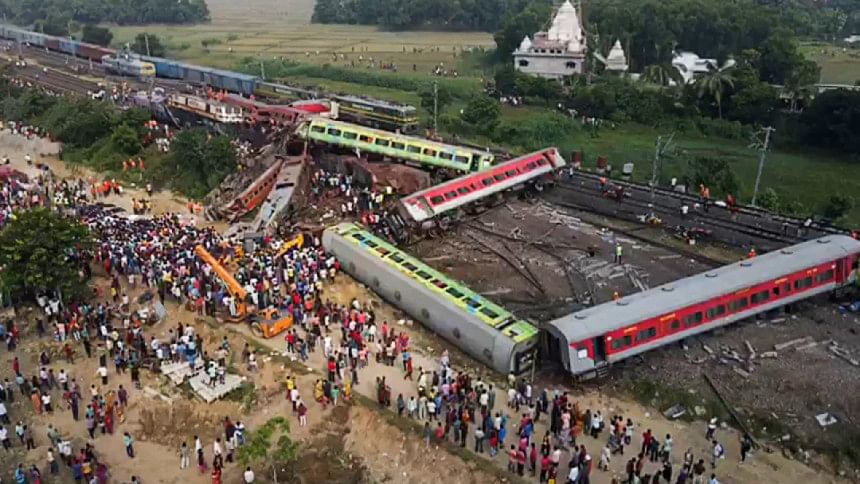Looking back on India’s triple train crash and the safety of rail travel

The triple train accident in Balasore in the eastern Indian state of Odisha on June 2 was considered the worst in three decades involving India's largest public transport system that ferries nearly eight billion people annually. The accident left 290 people dead and more than 1100 injured. The statistics point to the persisting issues of concern India needs to address as it goes about expanding and upgrading its rail infrastructure and services.
The accident between the speeding Shalimar-Chennai Coromandel Express and the Bengaluru-Howrah Express carrying nearly 2,000 people brought forth many questions about the state of India's rail infrastructure, particularly its safety aspect. Was it due to faulty signalling system or human error? There are two parallel investigations which are going on – one by the Commissioner of Railway Safety and the other by premier investigating agency Central Bureau of Investigation with the latter probing if there has been any tampering with the signalling system as claimed by Railway Minister Ashwini Vaishnaw. Was Balasore accident a toxic mix of mechanical failures and human error? Perhaps, we will get a correct picture only after the two probes. But this should in no way deflect the attention – and greater attention for that matter – from a key area begging to be addressed – safety of rail travel.
India's rail infrastructure was largely set up and left behind by British colonial rulers. The Indian government has an ambitious plan to tone up that infrastructure and Rs 2.4 lakh crore has been allocated for capital expenditure in the FY 23-24 national budget. The Indian railway has seen a dramatic increase in its capital outlays. As such, currently funds are less of a hindrance to upgrade the rail infrastructure including safety measures. However, putting funds to optimal use remains an area of worry. According to a report by India's top auditor Comptroller and Auditor General (CAG) which has oversight over all government departments, money allocated for track renewal works were not fully utilised between 2018-19 and 2019-20. Clearly, the work of upgradation and maintenance work of rail tracks and signalling brooks no further delay.
The graph of rail accidents in India has shown a declining trend over several years. Out of 1,127 derailments between 2017 and 2021, 289 were linked to track renewal. The number of "consequential" train accidents has declined from 74 in 2017-18 to 20 in 2020-21. According to one estimate, derailments constituted 75 per cent of "consequential" train accidents and collisions another five percent between 2016-17 and 2020-21. It is unfortunate that divisions should be created by terming accidents as "inconsequential" or "consequential" because every life matters and even one death should be of major concern.
Maintenance of tracks and the rolling stock are areas the Indian railway authorities can ill afford to ignore. Safety measures, including installation of anti-collision systems in trains are expanding but not at the desired pace. Both the CAG and the parliamentary standing committee on railways have flagged concerns over railway safety. They had brought out three reports showing that railways fell short of safety standards between December 2016 and March of this year. The government had set up a dedicated fund in 2017-18 to carry out safety-related work. In March 2023, the parliamentary committee pointed out that not once had the annual funding been spent fully. What is more disconcerting is a CAG report on derailments showed that the dedicated fund allocation had begun to see an increasing proportion diverted to a "non-priority" area. The Balasore incident should be an eye-opener to the urgent need for the much-needed upgrade of safety mechanism and constant vigil on this.
The Balasore accident has set off a debate whether the government was giving more priority to semi-high speed passenger trains like Vande Bharat, Prime Minister Narendra Modi's favourite project, announced in 2021. What has been forgotten or ignore is that semi high-speed trains, rail safety and track upgradation are not mutually exclusive. It is not a case of either or. All should run simultaneously but with different degree of emphasis because the issue of safety in all trains remains paramount.
The two separate probes into the Balasore accident should fix responsibilities but that exercise has to be part of a comprehensive review of the path to modernise the country's railways and its safety. It should not be a case of a train to nowhere.


 For all latest news, follow The Daily Star's Google News channel.
For all latest news, follow The Daily Star's Google News channel. 






Comments